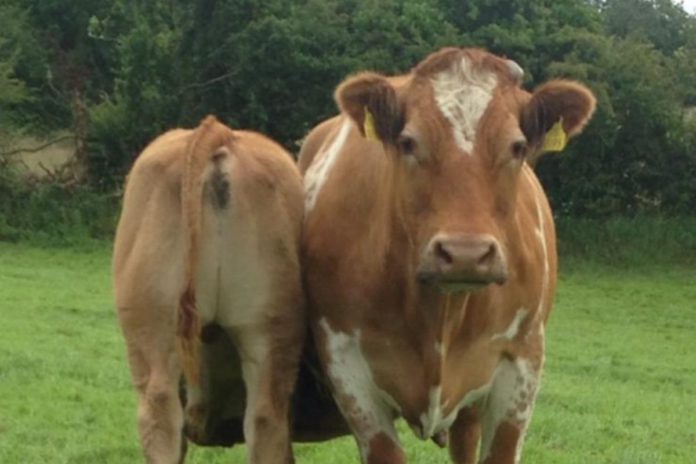In this article, Tom Murphy, B&T Dairy Adviser, Teagasc Galway/Clare, discusses sustainable grassland management.
Animals grazing grass or fed conserved forage from grass achieve significantly higher intakes when the quality is good, leading to very contented animals.
This, in turn, is converted into higher milk solids production from lactating animals. The milk, in turn, will have higher constituents.
Typically, milk protein difference between grazing grass at the correct stage, is of the order of 0.1% to 0.2% higher, than if left to grow for a further five days.
At today’s milk prices, this difference can cost up to 1.5cent per litre. Also, the energy level drop/difference of the forage is typically 1 UFL /animal/day.
Young animals on the farm grow at a faster rate, and significantly higher live weight gain is achieved on all animals.
Overall, animals on the farm are healthier, and performance is maximised, when grassland management is improved.
Grazing too soon or too late
With better grassland management, a positive momentum is created. The challenge is to graze each sward when it is at/closest to the correct stage for grazing (for the stocking rate of the farm and the time of year).
Grazing swards at higher than this can create a repetition of similar cycles, and the negative consequences are extrapolated.
Paddocks that are grazed too soon lead to a reduction in overall growth, as the sward becomes exhausted. In a typical 3 week cycle, 50% of the yield is grown in the 3rd week (grass grows grass).
When grazed at the correct stage, paddocks are grazed off (cleaned-out) better, leading to increase tillering, better regrowths, fewer weeds, more leaf material and less stem.
Higher animal intakes, in turn, help in keeping the post grazing height correct and consistent. When the grazing rotation is managed well, quicker regrowth’s result. Persistency in the sward improves, and the output and response to fertilisers (bagged/slurry/dung) also jumps ahead.
More grazings per paddock
Shorter rotations with dense swards, leads to more grazings per paddock. The higher growth rate and quality leading to an additional increase in grass utilised.
Research has shown the benefit of this to be about 1.5t grass Dry Matter for an extra grazing rotation. If you are a beef farmer, this benefit is worth €100/ha. If you are a dairy farmer, it is worth €175/ha.
Importantly, the environment benefits substantially, when a high level of grassland management is adopted. Less grass and forage is wasted as utilisation rates increase.
The very high fibre grass and forage materials fed to ruminants leads to significantly more methane gas production, than if fed at the recommended grazing/harvesting stage.
Grazing animals redistribute/recycle their own wastes, leading to less slurry production and less ammonia gasses produced. Grazing grass at the correct stage or cover (1400kg DM/ha), instead of allowing five or more extra days growth (2000kg DM/ha), results in a 15% reduction of greenhouse gas production.
Carbon sinks
Higher quality and higher intakes of grass and forage, leads to a reduced need for imported concentrate feed per unit of production.
Better growth rates lead to increased fertiliser uptake, and more efficiency from fertiliser use, which in turn leads to reduced risk of loss to watercourses and air. Nutrients are recycled better, also. Longer days at grass, and extended grazing result in shorter housing and winter feeding periods.
This has the knock-on effect of less tractor and machinery work for conservation and feeding of silage and slurry spreading.
It is shown that well-managed grass swards act as a sink or store for carbon. They are an important source for carbon sequestration.
An additional profit of €100-€175/ha
Where does the farmer fit into this equation? It is worth stating again, that an extra grass rotation in the year (difference between a farmer with a plan and one who has not) will lead to an extra 1.5t of grass utilised per ha, and this will result in an additional profit of €100 to €175 per ha depending on the system.
The calculated benefits of grazing grass instead of feeding silage in spring alone is worth €2.70 per dairy cow per day and €2 per Beef LU per day.
A well-managed grazing system results in less topping. Where the focus is on grazing, less silage is needed, and there is less slurry to be applied.
With better quality grass and silage and consistent management, meal feeding can be reduced without reducing animal performance.
Overall, there is less work, less cost and a higher profit. But, more importantly, this allows an improvement in work-life balance, lifestyle and enjoyment of farming.





